Which gets your heart pounding faster—the thunderous stock cars of NASCAR, or the rocket-like open-wheel racers of IndyCar? Where fans align and which series truly offers the ultimate motorsport thrill is an ongoing debate that’s as electrifying as the races themselves. Strap in as we dive into the high-speed, high-stakes world of nascar vs indy car series and discover which racing phenomenon reigns supreme among fans and car lovers alike.
What Makes Nascar vs Indy Car Series a Battle of Speed and Excitement?
- Are you more thrilled by the roaring engines and bumper-to-bumper action of stock car racing or the lightning-fast precision of open-wheel races? Let’s unravel which motorsport truly wins the hearts of fans.
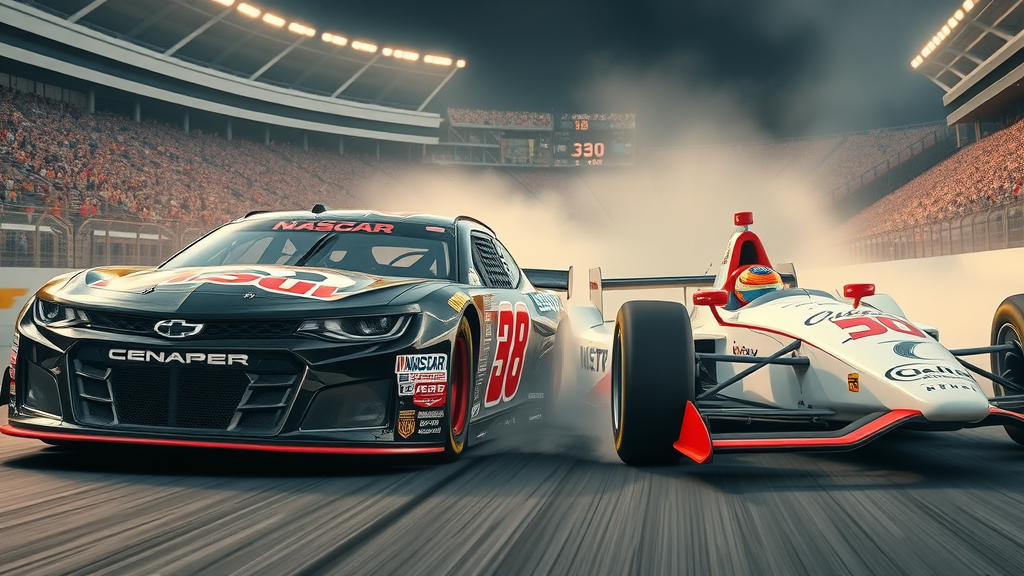
The Nascar vs Indy Car Series debate is fueled by contrasting styles, speed, and the way each series serves up adrenaline. NASCAR’s stock cars thunder around oval tracks, delivering gripping bumper-to-bumper drama, while IndyCar’s open-wheel machines fly with surgical precision over a variety of tracks, from legendary ovals to urban street circuits. The rivalry is about more than just speed—it’s about which series ignites deeper loyalty, offers more unpredictable outcomes, and creates the strongest memories for fans worldwide. Each motorsport calls out to different kinds of racing fans: those who crave sensory overload and close-quarters combat, and those who seek the high-speed artistry of a perfectly maneuvered open-wheel car.
Practical examples abound. At a typical nascar race , a spectator might feel the rumble from dozens of stock cars as they jostle for the lead at Talladega. Meanwhile, an indy car fan will marvel at the razor-sharp cornering and incredible speeds on display at the Indianapolis 500—an event that boasts over a hundred years of racing heritage. Both series, rich in tradition and drama, continue to fight for the title of America’s premier motorsport spectacle.
Essential Insights You'll Gain About Nascar vs Indy Car Series
- Comparative excitement: Understand how NASCAR and IndyCar deliver adrenaline to fans
- Performance breakdowns between NASCAR's stock cars and IndyCar’s open-wheel racers
- Dive into the fan cultures that make each motorsport unique
- Learn about top drivers and their impact on each series
Nascar and IndyCar: Power, Performance, and Fan Loyalty
A Legacy of Rivalry: The Storied History of Nascar and Indy
“The true battleground isn't just the track—it’s in the hearts of fans who swear by their favorite series.”
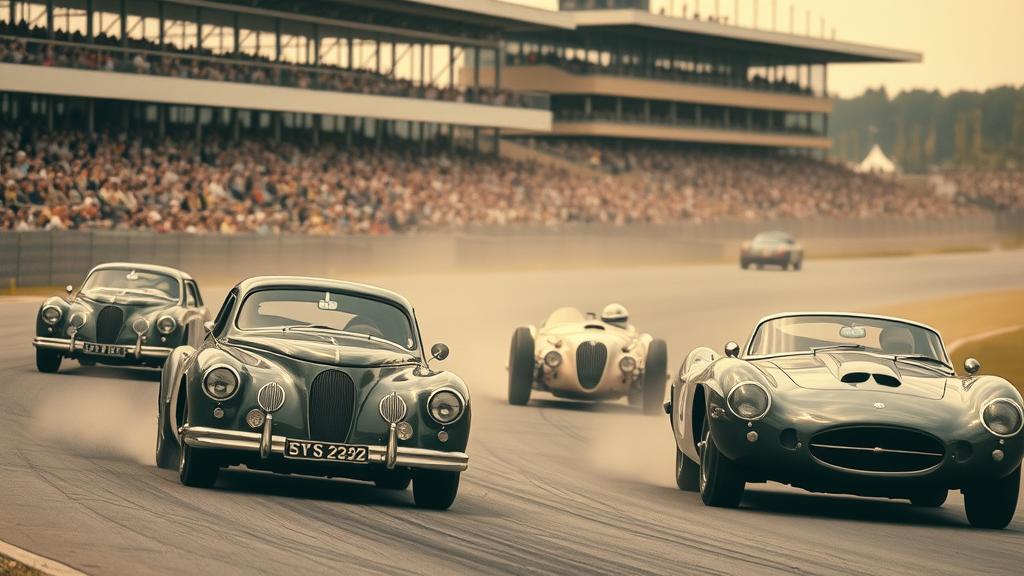
When examining the nascar vs indy car series , it’s impossible to ignore their deep, intertwined histories. NASCAR’s stock car roots stretch back to the bootlegging era, morphing into a hugely popular national sport. The IndyCar Series, with the Indianapolis Motor Speedway as its beating heart, became an icon of open-wheel racing—a proving ground for daring engineering and raw talent.
Decades ago, the distinction between these two racing series was clearer: stock cars were built for endurance and rugged competition, while open-wheel cars focused on aerodynamic efficiency and speed. Yet, the rivalry has flourished, with crossover attempts by legendary car drivers like Tony Stewart and Kurt Busch, who’ve sought glory in both circles. This ongoing duel for supremacy has created distinct traditions and passionate fan bases that fuel the rivalry to this day.
Technical Showdown: Stock Car vs Indy Car Engineering
| NASCAR Stock Car | IndyCar | |
|---|---|---|
| Top Speed | ~200 mph (oval) | 230+ mph (Indy 500) |
| Horsepower | ~670 hp | ~700-750 hp (turbocharged V6) |
| Weight | ~3,400 lbs | ~1,600 lbs |
| Aerodynamics | Built for downforce; less aerodynamic | Highly advanced, low drag, high downforce |
| Track Types | Oval tracks (primarily), some road courses | Ovals, road courses, street circuits |
The technical gulf between stock cars and open wheel cars is dramatic. NASCAR’s monstrous cars rely on V8 engines, minimal aerodynamics, and brute force, demanding exceptional car control on tight ovals. By contrast, IndyCars are feather-light projectiles, powered by turbocharged engines and engineered for maximum efficiency, agility, and slipstreaming at high speeds . The contrast in engineering philosophy defines how each series feels and what situations test the skill of a car driver .
Wheel Race Drama: Race Formats and Fan Experience
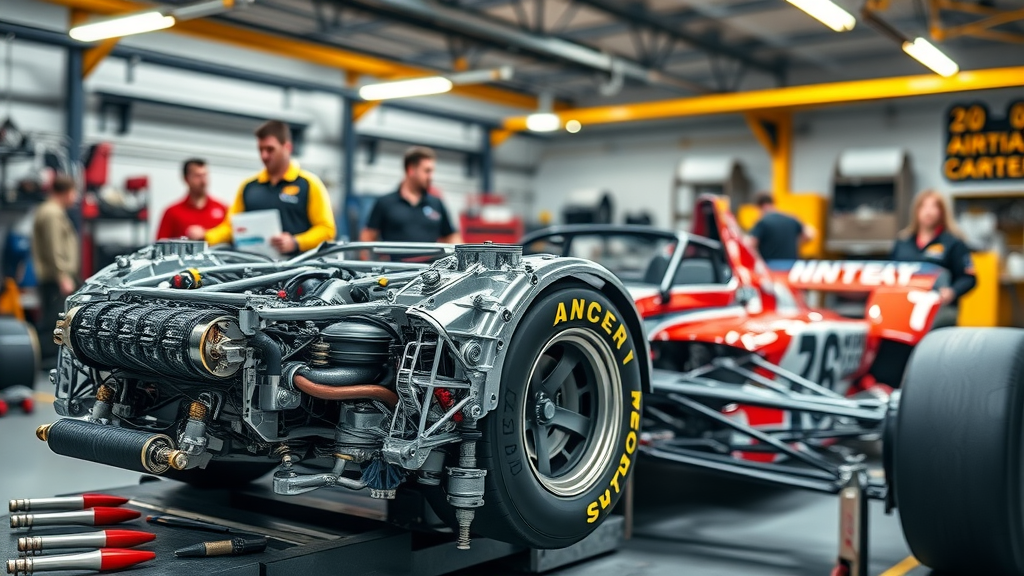
The drama of a wheel race is amplified by the unique formats of each series. NASCAR events are typically endurance battles spanning over 500 miles and three or more hours, culminating in strategic duels during celebrated pit stops . By contrast, the IndyCar Series brings a blend of endurance and sprint, mixing short and long races on a variety of tracks that challenge both mind and machine. Fans delight in the unpredictability—IndyCar’s alternating circuits and NASCAR’s playoff formats inject drama into every season.
Both series deliver access for the avid car fan : NASCAR’s infield culture and meet-and-greets, and IndyCar’s paddock passes and interactive fan villages. Whether you’re after high-octane pageantry or a more technical, cosmopolitan vibe, each series delivers a tailored racing fan experience unlike any other in the world of auto racing.
Stock Car Thunder: What Sets NASCAR Apart
NASCAR Stock Cars: Design, Noise, and Sensory Rush
NASCAR stock cars are built to be beasts on the oval. Their heavy, rear-wheel-drive frames are designed for resilience over long, grueling races, with each cup car generating a guttural growl that reverberates through grandstands. The iconic shape, muscular design, and thunderous engines overwhelm the senses and create an event that is as much about spectacle as speed. Most nascar races embrace tradition, where the sensory experience—the ear-splitting noise, lingering tire smoke, and adrenaline-fueled chaos—becomes an unforgettable part of the event for every racing fan in attendance.
Unlike the whispered whoosh of an indy car , the stock car’s symphony is primal—and for many, that’s the true sound of American motorsport. This connection to history and culture is what cements NASCAR’s status in the hearts of millions of fans across the United States and beyond.
Close Quarters: Bumper-to-Bumper Action and Racing Strategy
- Drafting techniques keep cars tightly packed and foster incredible passing maneuvers
- Pit stops and fuel strategies are often race-defining
- Oval-dominated schedule amplifies wheel-to-wheel drama
- Restrictor plates introduced for safety and closer racing on superspeedways
Racing at high speed mere inches apart, stock car drivers don’t just battle each other—they battle physics and the track itself. The pack racing, trading paint, and last-lap duels create an intensity that is unique to NASCAR. Restrictor plates, playoff eliminations, and the constant threat of dramatic multi-car crashes keep the drama alive deep into every event and season.
NASCAR Fan Base: Unrivaled Dedication and Passion
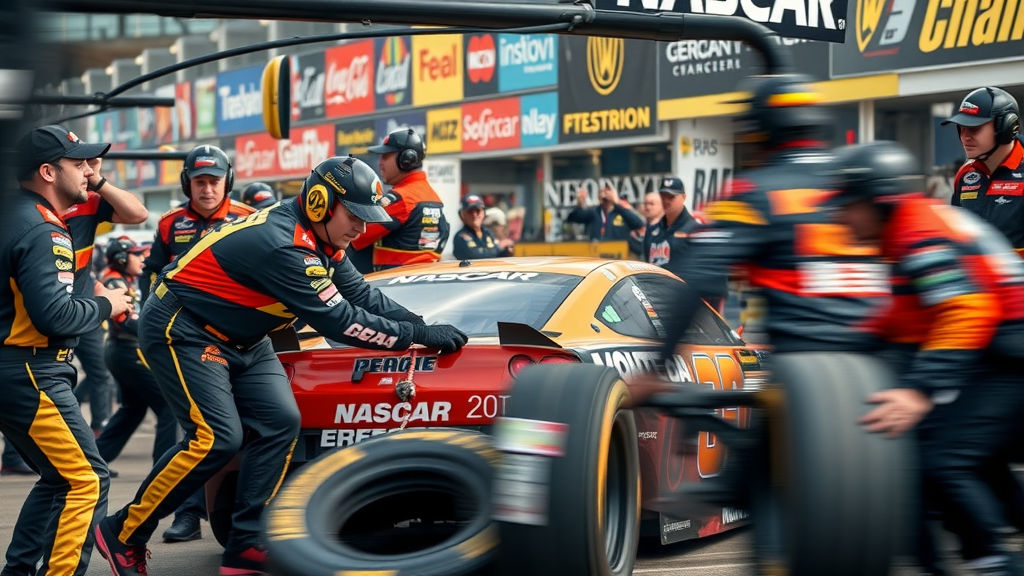
The fan base of NASCAR has a reputation for fierce dedication. Fans often follow favorite drivers and teams across the country, setting up elaborate tailgates and forming lifelong bonds in the stands. The tradition of family loyalty—where generations cheer for the same drivers—means NASCAR has a culture rooted as deeply in community as it is in competition. The sense of belonging is strong: whether you’re in the grandstands of Daytona or watching from home, NASCAR’s passionate following is second to none among racing series in the world.
Indy Car Series Brilliance: Speed, Precision, and Spectacle
Open-Wheel Magic: The Marvel of IndyCar Design
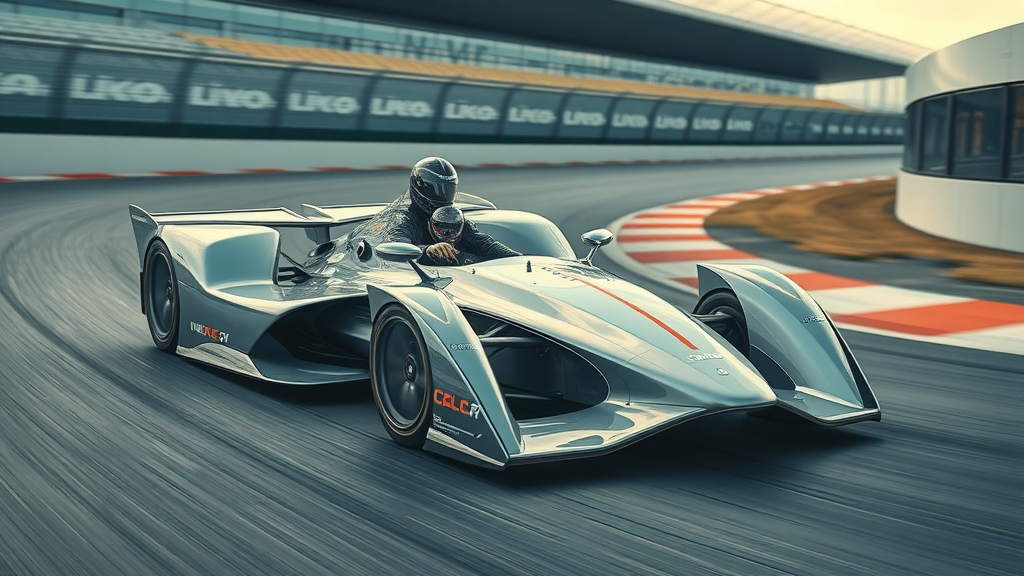
The open-wheel layout of the IndyCar Series maximizes speed, agility, and visual spectacle. With exposed wheels and ultra-light construction, every indy car is a technological marvel—optimized for high speeds and surgical precision. Unlike the heavy NASCAR stock cars, IndyCars can corner at blistering speeds thanks to their advanced aerodynamics and low drag profiles.
This design not only changes how drivers approach the race—requiring a razor-sharp focus and lightning responses—but also how fans perceive the sport: it’s a celebration of human engineering and driving precision at the absolute limit. IndyCar’s diversity of tracks, from the legendary Indianapolis Motor Speedway to downtown street circuits, ensures a new challenge—and a new spectacle—every weekend.
Lightning Fast: Why Indy Cars Dominate on Speed and Technology
- Iconic IndyCar venues: Indianapolis 500, road courses, street circuits
Speed is synonymous with IndyCar, particularly at the world-famous Indianapolis 500. IndyCars regularly touch 230 mph, especially during time trials at the Indianapolis Motor Speedway , cementing their status as some of the fastest race cars in the world. Technological innovations like push-to-pass and advanced traction control push the boundaries of what a modern race car can do and how car drivers can influence races.
Whether weaving between barriers on a tight street circuit or streaming by competitors on a vast oval, IndyCar’s versatility and pure pace keep fans at the edge of their seats. The series’ commitment to evolving technology, sustainability, and international competitiveness ensures its races always offer something fresh for long-time enthusiasts and new fans alike.
The Indy Car Driver’s Craft: Agility, Focus, and Bravery
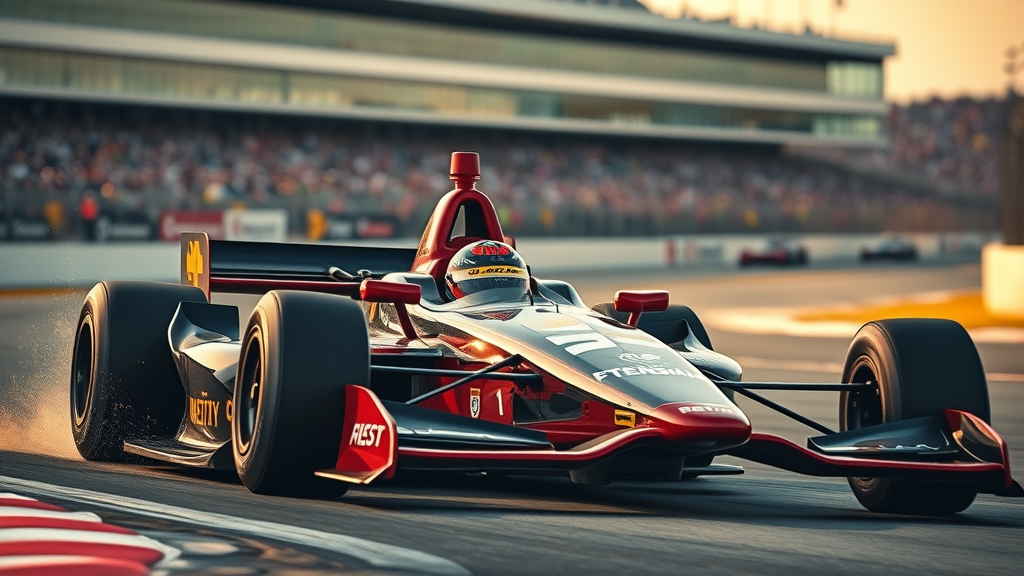
IndyCar demands extraordinary levels of skill, mental stamina, and bravery from its car drivers. Piloting a feather-light, high downforce machine requires split-second decision-making and nerves of steel—especially on circuits where mistakes can result in high-speed crashes. Drivers must excel at both road courses and ovals, switching styles effortlessly to stay competitive across the season.
This challenge, coupled with ever-tightening lap times and razor-thin margins, ensures every victory is hard-earned. IndyCar drivers like Scott Dixon and Josef Newgarden are celebrated not just for their wins, but for their versatility and courage behind the wheel at some of the most daunting venues in modern motorsports.
IndyCar’s Fan Base: Diversity and a Global Flair

Unlike the more regionally anchored NASCAR fandom, IndyCar’s fan base reflects the series’ international flavor. The grid welcomes drivers from across the world, bringing in fans from Brazil to New Zealand and everywhere in between. This cosmopolitan appeal makes every event a mini-United Nations of motorsport—an environment where local IndyCar enthusiasts and international travelers mingle seamlessly in the stands and paddocks.
IndyCar also leads with accessible fan experiences like driver autograph sessions, up-close car displays, and globally streamed race broadcasts. The sport’s global reach means that every major event, especially the historic mile race at Indy, becomes a shared moment for racing fans everywhere, transcending borders and cultures.
Nascar and IndyCar Drivers: Heroes and Rivalries
Legendary Car Drivers: Comparing Skillsets Across Series
Nascar and IndyCar have produced some of motorsport’s most celebrated legends. NASCAR is home to icons like Dale Earnhardt Jr., Jeff Gordon, and Jimmie Johnson—masters of strategic drafting, physical endurance, and navigating the ever-shifting brawl of stock car fields. In IndyCar, legends like Scott Dixon, Helio Castroneves, and Mario Andretti are revered for their adaptability and ability to unleash explosive speed on any track. Each discipline refines a unique skillset; stock car drivers focus on racecraft during long, grinding events, while IndyCar heroes excel at maintaining ruthless pace and composure at high velocities across technical circuits.
This distinction has inspired several drivers to attempt both disciplines, sparking memorable crossovers and fierce debates about the world’s most complete car driver . Their stories only add fuel to the passionate discussions about which series shapes motorsport’s true titans.
Rising Stars: Young Talents Shaping NASCAR and IndyCar’s Future

As the world of motorsport evolves, a new generation of young car drivers is redefining what it means to be a champion. NASCAR’s young guns—like Chase Elliott and William Byron—bring a blend of legacy and fresh perspective, while IndyCar prodigies such as Colton Herta and Pato O’Ward dazzle fans with courage and innovation. These rising stars are more than just talented wheelmen; they’re social media savvy, diverse, and deeply engaged with their fans both trackside and online.
Both series invest in driver development programs, searching for the next crossover superstar—the rare car fan who can dominate in stock cars and open wheels alike. Their battles now and in the years to come will continue to keep the nascar vs indy car series rivalry exciting and relevant for a new generation of racing fans.
Fan Base: The Real Race for Hearts in Nascar vs Indy Car Series
Community, Loyalty, and Tradition: The NASCAR Effect
The sense of community within NASCAR’s fan base is legendary. Many fans grow up immersed in racing culture, attending races with family members year after year. Tailgating before a nascar cup race is a time-honored ritual, filled with cookouts, music, and fellowship. Loyalty is passed down through generations; wearing your favorite driver’s colors is more than fandom—it’s a statement of heritage.
This deep sense of tradition is part of what keeps NASCAR as one of the most attended and televised racing series in the world. The emotional highs of victory, the heartbreak of a late crash, and the buzz of a packed oval track are collective experiences that unite fans and keep them returning for more.
The Cosmopolitan Allure: IndyCar’s International Pull
IndyCar’s appeal lies in its openness—to people, places, and technical innovation. With drivers and teams from around the world, and a race calendar that covers everything from classic American ovals to European-style road circuits, IndyCar’s fan base mirrors its diversity. Crowds at events are filled with people flying flags from multiple countries, lending the series a distinctly global vibe.
This cosmopolitan flavor also means IndyCar is constantly expanding its reach, attracting new generations of fans through dynamic marketing, social engagement, and the kind of high-speed racing that speaks a universal language: excitement.
Is the IndyCar better than NASCAR?
Examining Performance, Safety, and Fan Engagement for Each Series
Is indy car better than NASCAR? The answer depends on what you value. From a technical standpoint, Indy cars are faster and more technologically advanced, offering a unique challenge for car drivers who prize agility and quick adaptation. NASCAR excels in raw spectacle, delivering thunderous excitement and strategic drama that captivates its devoted fan base .
On safety, both series have invested massively in protecting drivers, whether it’s through impact-absorbing barriers, advanced restraints, or continual improvements in cockpit design. In terms of fan engagement, NASCAR’s community spirit and tradition are hard to match, but IndyCar’s accessibility and international flare appeal to those seeking a more diverse motorsport culture. Ultimately, both series excel in their own right, drawing different kinds of racing fan into their orbit.
What is more popular, Indy or NASCAR?
Audience Size, TV Ratings, and Social Media Influence
NASCAR remains the behemoth in terms of audience size, TV ratings, and sponsorship dollars. Major NASCAR events regularly attract millions of viewers—especially the Daytona 500, which rivals any global sports broadcast. Its social media presence, merchandise reach, and local fan club network are the largest in American motorsport.
That said, IndyCar events like the Indianapolis 500 draw enormous crowds and global viewership, with the race considered a “must-watch” spectacle. IndyCar’s steady growth in social engagement, international TV rights, and digital fan interaction signals that its popularity is on the rise, especially with younger, globally minded fans.
Is a Formula 1 car faster than a NASCAR?
Performance Metrics: IndyCar vs Formula 1 vs NASCAR
Comparing a Formula 1 car to NASCAR’s stock car or even an indy car is a lesson in extremes. F1 cars, with their unrivaled downforce and turbo-hybrid power units, are the kings of single-lap speed—regularly achieving over 220 mph on the right circuit. IndyCars come close, especially on ovals, with top speeds north of 230 mph. NASCAR cars, while impressive, are heavier and less aerodynamically refined, typically topping out at 200 mph on superspeedways. Each style is engineered for a different spectacle and audience—that’s what keeps racing so fascinating for any car fan .
What is the difference between NASCAR and Indy cars?
Comparing Design, Performance, and Racing Styles
The most obvious difference lies in design: NASCAR fields bulky, purpose-built stock cars with enclosed wheels, while IndyCar runs svelte, open-wheel machines. Performance-wise, IndyCars are lighter, faster, and more technologically advanced, while NASCAR cars focus on durability and close-quarters racing physics.
Racing styles reflect these differences. A typical NASCAR race is about strategy, endurance, and tactical aggression; races can stretch for hours, with frequent cautions and dramatic restarts. IndyCar, in contrast, demands ruthless precision—braking, throttle management, and split-second passing are constant on both ovals and road courses. This variety means each series delivers excitement in sharply different ways.
Frequent Questions About Nascar vs Indy Car Series
- Why are NASCAR races longer than IndyCar races? NASCAR events traditionally emphasize endurance—a test of both mechanical strength and driver stamina. Longer race lengths allow for more strategy, pit stops, and unpredictable developments that can swing the result at the last moment.
- How does safety compare between IndyCar and NASCAR? Both series adhere to strict safety protocols: energy-absorbing barriers, head-and-neck restraints, fire-retardant suits, and advanced communications systems are standard. However, open-wheel cars (IndyCar) are inherently more vulnerable to wheel-to-wheel contacts, while NASCAR’s stock cars offer additional body protection.
- Can a NASCAR driver transition to IndyCar, and vice versa? Several drivers have made the jump in both directions, though switching disciplines is challenging. Stock car drivers must adapt to lighter, more responsive cars and high-speed cornering, while Indy drivers must learn the nuances of close-quarter racing and oval strategy. Success stories like Tony Stewart’s showcase what’s possible, but the path is never easy.
Which Series Delivers the Ultimate Thrill for Fans?
Personal Reflections: The Emotional Highs of Each Series
“Whether it’s the earth-shaking rumble of stock cars or the sharp focus of open-wheel engines, both series electrify in their own way.”
Choosing between the nascar vs indy car series comes down to what gets your heart racing. For some, nothing beats the camaraderie and chaos of a NASCAR stock car battle; for others, the speed and suavity of an IndyCar duel is the ultimate spectacle. Both racing series offer an emotional rollercoaster—and that’s what keeps fans coming back, season after season.
Get Engaged with the Nascar vs Indy Car Series Debate!
- Share your thoughts: Which series makes your heart race more?
- Join the conversation and let your voice be heard in the ultimate motorsports debate.
Conclusion
Choose your champion, dive deeper into the excitement, and join a community of fans who are as passionate as you are. Whether you prefer roaring stock cars or lightning-quick open wheels, the ultimate thrill is only a race away.
 Add Row
Add Row  Add
Add 




Write A Comment